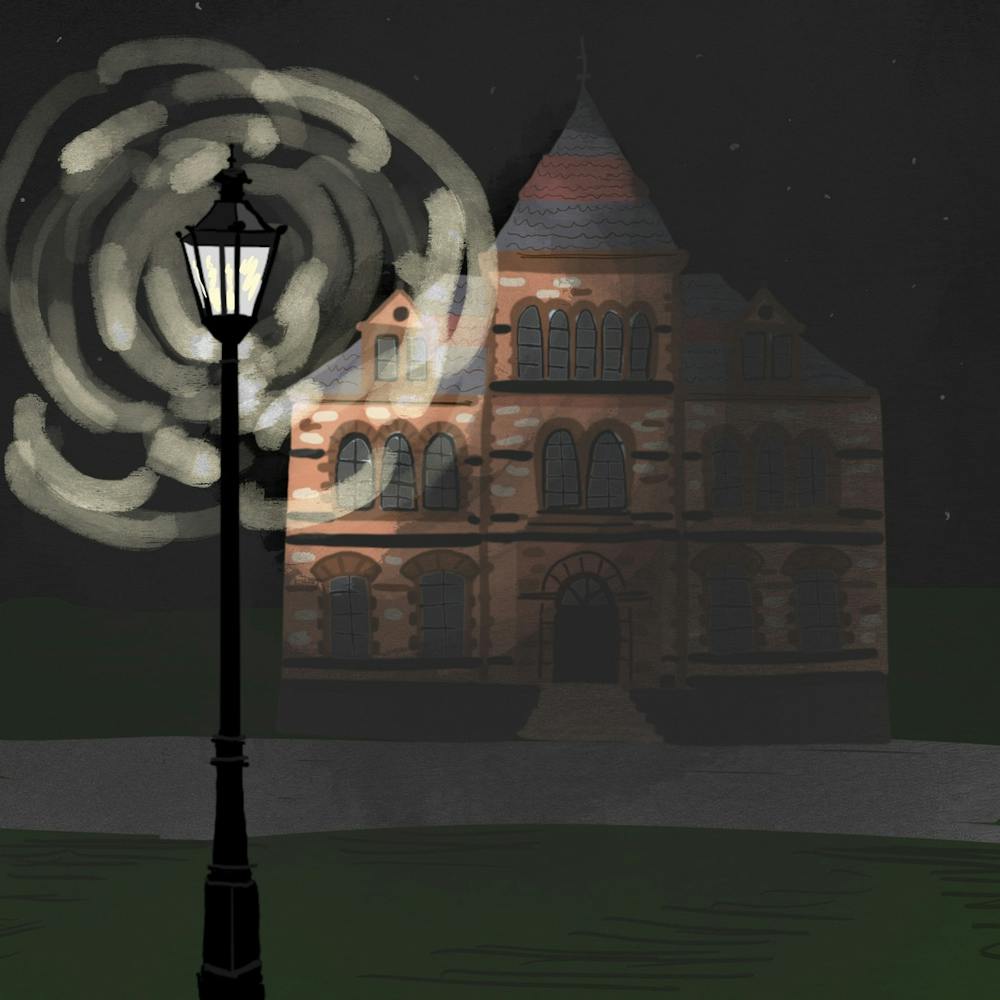Daylight saving time ended Sunday, which means that the sun will set over Providence before 5 p.m. each evening until February.
When the time changes and it is “darker than normal,” community members change their routines slightly, including their commute and “day-to-day activities,” wrote Sergeant Kelly Mitchell, a member of the DPS Community Engagement Team, in an email to The Herald.
To address campus safety needs, DPS actively seeks student opinions regarding lighting on campus, Mitchell explained. This includes the biannual “Light the Way” survey — conducted alongside Facilities Management, Student Services and Campus Life — which fields community concerns surrounding lighting and safety.
In conversations with The Herald, some students outlined concerns with lighting on campus. Maya Hoffman ’24 said that the walk from the University’s main campus to her residence hall, Young Orchard, can sometimes be “really dark,” adding that “it feels a little scary,”
While Benjamin Wendelstadt ’24 described lighting on campus as “sufficient,” he said there “could maybe be more lighting” around Wriston Quadrangle and surrounding areas.
Allyssa Foster ’25 noted that she wished the University had more lighting on the Main Green: “When you’re crossing between buildings, you cannot see where you’re going,” she said.
There is more lighting “in some areas, like closer to Thayer,” said Julia Boscardin ’25, who often seeks new routes home to avoid dimly-lit areas at night. But closer to the University’s dorms, “there’s not really enough,” she noted.
The University makes regular efforts to address safety issues related to lighting as they come up through the year, Mitchell wrote. “Whenever concerns are raised, our team members address them as quickly as possible,” added John Vinson, deputy chief of police for DPS.
“The only way we're made aware of some of these” issues, he explained, “is when our students, faculty and staff, report (them) to us.”
Solving these problems does not just mean adding additional lights, Vinson said. The University can also opt to build walkways, increase the number of blue lights and remove shrubbery.
Providence and the University share the job of lighting campus and its surrounding areas: Facilities Management maintains all lights in Brown-owned pathways and parking lots, while the city is responsible for streetlights, wrote Paul Armas, assistant vice president of facilities operations, in an email to The Herald.
Providence’s Department of Public Property stays in “regular communication with stakeholders, including Brown University, about streetlights,” wrote Andrew Grande, director of media relations for Providence, in an email to The Herald.
“Many factors including ambient light and existing lighting sources are considered when planning street light placements,” he noted.
Students, faculty and staff members who participate in the “Light the Way” survey walk “down pathways and parking lots looking at lights, shrubbery and … indicators that allow us to really assess the effectiveness of the lighting,” Vinson said.
This year’s survey will last from today until Friday, after which DPS will compile a report that “outlines areas of concern,” Vinson said. Then, DPS works with Facilities to “try to do everything we can to address those issues.”
DPS also offers Safewalk as a resource for students who want another student to walk with them or escort them across campus at night. Thomas Castleman ’23, coordinator for Safewalk, wrote in an email to The Herald that supervisors for the DPS program created a list of areas on and around campus that they believe need better lighting. That list includes Ruth Simmons Quadrangle, the Quiet Green, George Street and the north end of Prospect Street, near Machado House.
A study mapping Safewalk activity in fall 2021 revealed that walkers most often pick up students near the center of campus, while drop off locations are more dispersed toward its perimeter, Castleman added. Safewalk does not have specific data about lighting — but generally, “it gets significantly darker as you move off campus,” he said. “It would be nice to have better lighting in the surrounding areas.”
“It's pretty likely that in darker areas, people are probably feeling more inclined to request company to walk,” Castleman added.
Students should “never hesitate to let us know when there are concerns about lighting,” Vinson said. “The one thing we want to make sure we do is to be responsive to our community's concerns.”
Vinson encouraged students to travel in pairs on well-lit paths and avoid taking shortcuts at night. Beyond Safewalk, the University also has several other safety systems in place, including the Brown University Shuttle, Yellow Jackets and Blue-Light phones, he added.





